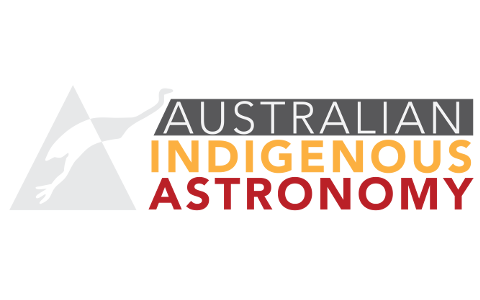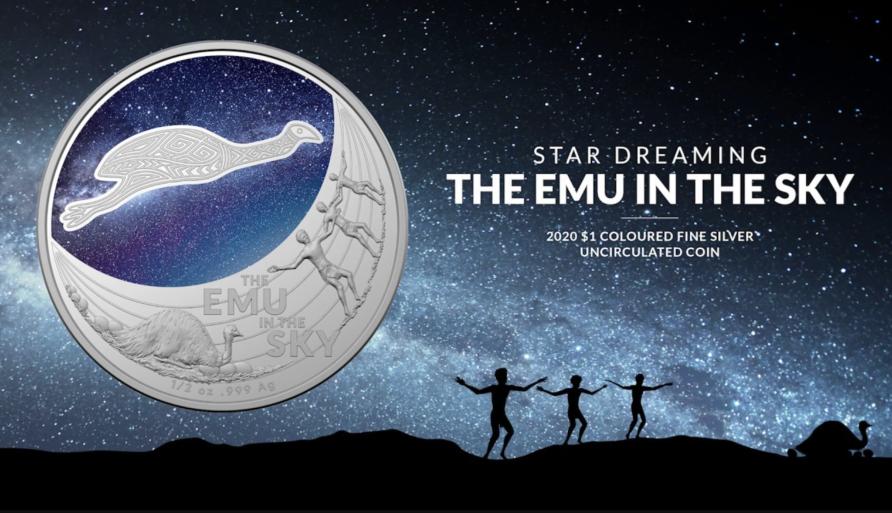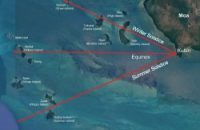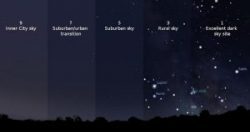Aboriginal and Torres Strait Islander Astronomy
The First Nations cultures of Australia – Aboriginal and Torres Strait Islanders – speak over 250 distinct languages and stretch back for over 65,000 years. This makes the First Australians the oldest astronomers and the oldest continuing cultures in the world. Aboriginal and Torres Strait Islander people developed a number of practical ways to observe the Sun, Moon and stars to inform navigation, calendars, and predict weather. Australia’s First Nations people assign meaning and agency to astronomical phenomena, which informs Law and social structure. It also serves as the foundation for narratives that are passed down the generations through song, dance, and oral tradition over tens of thousands of years.
“Indigenous astronomy” is the first astronomy – the astronomy that existed long before the Babylonians, Greeks, the Renaissance, and the Enlightenment. This website explores the many aspects of Indigenous Astronomy in Australia. Learn how Aboriginal and Torres Strait communities perceive various types astronomical phenomena, how elders read the stars, or watch videos of animations, dances, and songs related to the stars.
The site will constantly improve and grow. Take some time to explore!
Indigenous Astronomy now part of the National Curriculum
We are happy to announce that the new National Curriculum incorporating Indigenous Astronomical Knowledge is now available for teachers and educators via the University of Melbourne Indigenous Education web portal. The 14 Units are aimed at Years 5 & 8, and show how Indigenous Astronomy can be incorporated into the seven learning areas of Science, Mathematics, The Arts, English, Technologies, Humanities and Health. Please take some time to explore.
Indigenous Astronomy features in new Commemorative Coin
The Emu in the Sky is one of Australia’s most famous dark constellations, holding special meaning for Aboriginal Australians. Now, it has been commemorated in a silver coin by the Royal Australian Mint. It features “Gugurmin: the Emu in the Sky”, from the skylore of the Wiradjuri people of central New South Wales. The constellation artwork was produced by Scott ‘Sauce’ Towney, a Wiradjuri artist from Peak Hill in New South Wales. The uncirculated $1 coin design shows a male Emu (Dinawan) sitting on a nest and a trio of young men dancing in a Bora ceremony while Gugurmin appears in the sky above them, indicating the connection between the Earth and the sky. The back story can be read in this article from the University of Melbourne’s Pursuit eMagazine.
Recent Publications
by Duane Hamacher, Robert Fuller, Trevor Leaman and David Bosun. Journal of Astronomical History and Heritage, Vol. 23(1), pp 89-99, 2020
A Cultural Comparison of the ‘Dark Constellations’ of the Milky Way
by Steven Gulberg, Duane Hamacher, Alejandro Martin-Lopez, Javier Mejuto, Andrew Munro and Wayne Orchiston. Journal of Astronomical History and Heritage, Vol. 23(2), pp 390-404, 2020.
Credits
Curator: Dr Duane Hamacher
Website Editor: Trevor Leaman
Web Developer: Sean Williams
Logo: Rae Cooper





